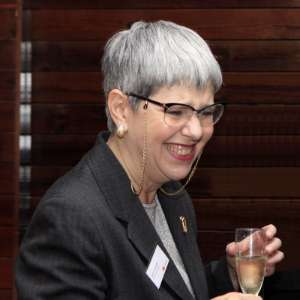Baroque music is not one of the prominent offers of the Stockholm music scene, which is generally focused on more recent periods. The matinee concert at the Grünewaldsalen, featuring a programme almost exclusively by Jean-Philippe Rameau, received a warm welcome from the many Baroque lovers in Stockholm. The Orfeus Barockensemble, founded in 2015, consists of members of the Royal Stockholm Philharmonic Orchestra and is an expression of their interest in Baroque music and interpretation. The ensemble plays period instruments under the artistic leadership of first violin Elin Gabrielsson, who is also a member of the Italian Baroque orchestra Europa Galante. Their concerts are usually led by guest directors, and in this concert the honour fell to Mariangiola Martello, an experienced cembalist who works regularly with the opera houses in Oslo, Hamburg, Turin and Köln as a soloist and continuo. The programme included many excerpts from Rameau's operas and a few arias sung by tenor Anders Dahlin.
The Orfeus Barockensemble played with accuracy, good intonation, and a remarkable sense of ensemble. The group clearly relies on Gabrielsson, who leads the strings with confidence. They also showed pleasing chemistry and mutual understanding with Martello, who was leading from the harpsichord and managed to aid the orchestra in crucial moments and to give an overall uniformity to the sound.
The ensemble managed to deliver a convincing Baroque sound and sense of phrasing; their style was thoroughly enthusiastic and enthralling. What was missing was the perception of a true style galant; the lightness of the French Baroque style was, at times, lost in a sense of urgency and a "shortness of breath" in the music. The cellos and double bass, in particular, sounded slightly boisterous at times, especially at the beginning of the concert; but as the afternoon progressed, they became well integrated into the orchestral texture.
Music inspired by nature, the whistle of the wind and birdsong, and by different cultures, which were only in those days just becoming known to the European ruling class, were part of the programme, as well as elegant dances typical of the French Court. A few pieces gave some of the musicians a chance to shine with crucial solos, such as Jens Lemke on the bassoon: the excerpts from Les Boréades, as well as the delightful birds evoked by the flute of Cecilie Løken-Hesselberg, were quite enjoyable.
In 17th-century Europe, France was an exception in its rejection of the castrati. While castrated male singers were all the rage in most of Europe's opera theatres, in France they were considered "unnatural" (which is, frankly, understandable), and they were not allowed to perform. France's response to the castrato was the haute-contre: a tenor with an extremely high voice who would take the lead roles in French Baroque operas from the times of Lully onwards.
Anders Dahlin has a remarkable haute-contre voice: light colour, great ease in the high and very high registers, and a masculine middle-low register. His technique is sound, his projection is good, and his coloratura is sparkling and agile. At times the orchestra did cover him somewhat with their energetic delivery, but, overall, his voice managed to pierce through the thick tessitura, giving us a convincing interpretation.
The concert, a delightful performance of French Baroque music, was warmly applauded by the audience, who were clearly long overdue for a session of Baroque music, which is in short supply here in Stockholm. Perhaps a quote from Oliver Twist best sums up the feeling of Stockholm’s Baroque music lovers: “Please, sir, I want some more.”


